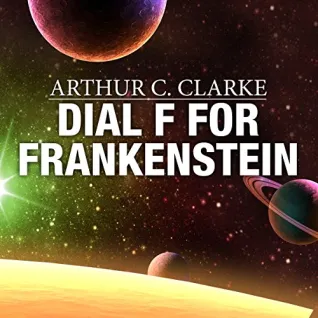
Science fiction (sci-fi) and scientific innovation have been intertwined since the creation of this genre. Here are five marvellous inventions that were inspired by sci-fi.
The Taser
The Taser stun gun is a hand-held electrical non-lethal weapon used by police and law enforcement officers around the world. Invented by Jack Cover, an American aerospace scientist in the 1960s-70s, this device takes inspiration from English writer Victor Appleton's young adult sci-fi novel ‘Tom Swift and His Electric Rifle (1911)’. The purpose of creating this device was to provide an alternative to the firearms that the air marshals were supposed to carry and use in case of a hijack. This invention was a solution to the concern that firing a gun on a plane could damage important and sophisticated machinery or pierce the fuselage.
Cover's invention pays homage to Appleton's book, and its name TASER is an acronym for Thomas A. Swift's Electric Rifle. The scientist is said to have added the 'A' to make the word easier to pronounce.
Liquid-fuelled rockets
The idea of rockets, space travel, and exploration might not sound exceptionally futuristic today, but for 16-year-old Robert H. Goddard coming across this idea for the first time in English novelist H.G. Wells's ‘The War of the Worlds’ (1898) was something right out of a dream. The famed father of rocketry invented and launched the world's first liquid-fuelled rocket in 1926, making space travel a reality. A few years after this momentous event, the NASA physicist penned a letter to Wells elaborating on the "deep impression" his novel made on the American inventor and motivated him to take this journey "aiming at the stars" both literally and figuratively.
World Wide Web
Millions of people across the globe use the World Wide Web every day. They access it through computers, phones and other digital devices. From ordering food to sharing one's location or some news and pictures with others, we use the Web all the time.
The first proposal for the World Wide Web was written by Tim Berners-Lee in 1989. Talking about the motivation behind this invention, the English computer scientist said, "I believe If you connect people up and you take away the national boundaries and you just leave humanity connected, it will naturally become better." He also credited Arthur C. Clarke's short story ‘Dial F’ for Frankenstein as the inspiration behind the World Wide Web. Acknowledging the impact of his story on Berners-Lee, the English sci-fi writer declared, "I guess I am the godfather of the World Wide Web."
Humanoid robots ASTRO BOY
Japan's Tomotaka Takahashi is one of the world's leading new-generation robot scientists. In 2013, his humanoid robot named Kirobo became the world's first talking robot sent into space to keep astronauts company. Talking about his passion for robotics in an interview, Takahashi said "When I was about six, I started reading the manga comic ‘Astro Boy’ after finding it lying around at home. My dream, from that moment on, was to become a robot scientist. I made my first robot around the same time, from a soapbox and duct tape complete with a robot face." Osamu Tezuka's ‘Astro Boy’ is a manga series that ran from 1952 to 1968. It chronicles the adventures of the titular humanoid. The Japanese scientist also admitted that his 13-inch-tall robot Kirobo's design and colour palette are heavily inspired by the friendly manga character.
Helicopter
Since the beginning of time, the idea of flying from one place to another in little time has been a fascinating topic. The helicopter is one of the many inventions that aimed to accomplish this. Russian-American aviator Igor Sikorsky is credited with inventing the modern helicopter. As a child, his parents exposed him to the technical drawings of da Vinci and encouraged him to pursue science. As a curious kid growing up in Russia, he was fascinated by Jules Verne's 1886 novel ‘Robur the Conqueror (which is also known as The Chipper of the Clouds)’. This book's description of a flying machine called the ‘Albatross’ inspired Sikorsky's design of the helicopter. Starting test flights in 1939, Sikorsky's aircraft was ready for larger production by 1942.
Picture Credit : Google




